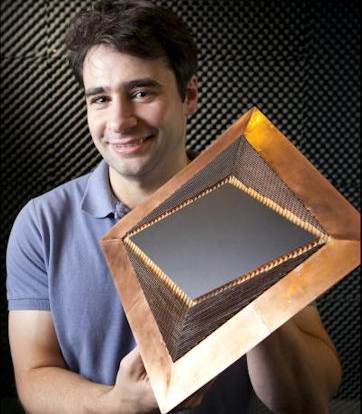A team including one of the men who first published a theory for making an invisibility cloak says it’s now overcome one of the bigger practical limitations. But it’s still very much a case of learning from the process rather than being too concerned with the product itself.
For some time the most basic idea of how an invisibility cloak would work was simply some form of camera and projection device along the lines of this classic Halloween costume.
In 2006, John Pendry of Imperial College London and David Schurig and David Smith of Duke University published an article on the topic in the journal Science. That put forward the idea that a better approach would be to use metamaterials: manmade objects that have properties that don’t exist in natural objects.
In this case the goal was to have a substance that interacted with light in an unusual way, effectively redirecting it around the “cloak.” However, when the team worked on a practical implementation, one of the biggest limitations was that reflections at the edge of the cloak meant losing light waves.
Nathan Landy (pictured), a graduate student who now works alongside Smith, says the effect was similar to a window: although you can see through it, you get reflections and thus are conscious of the glass being there.
He’s worked round that by changing the design of the cloak, which uses fiberglass strips and copper. The solution tackles the way the cloak, which divides into four quadrants, has spots at the intersections and corners of the quadrants where the light energy is lost. The redesign means that at each interface of the quadrants, a strip now meets its mirror image. That means that the cloak no longer has any significant “blind spots.”
The “cloak” is still not practical for real world use: even if transformed from two to three dimensions, it would be neither thin nor flexible enough for use as clothing. However, Landy points out that the cloak achieved its fundamental scientific goal: ” It split light into two waves which traveled around an object in the center and re-emerged as the single wave with minimal loss due to reflections.”
While anyone hoping to pull off the perfect heist or sneak into locker rooms is still out of luck, there are some practical benefits. The most likely area of development will be to use the concept to overcome the physical limitations caused to fiber optic cables by twists and bends. That could in turn mean greater efficiency and possibly faster internet connections.
(Image credit: Duke University Photography)

